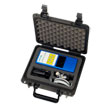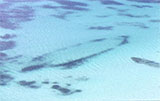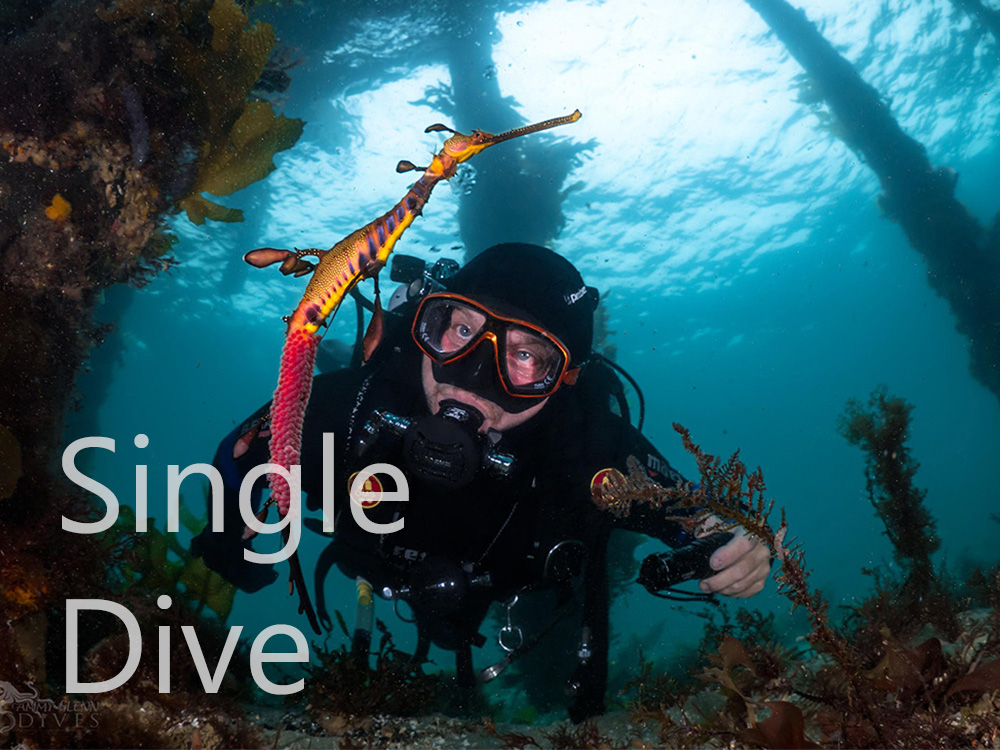Navigation
The Scuba Doctor is a leading resource of technical scuba and rebreather diving gas management accessories, like helium analysers, decanting whips, plus lots of more super diver gas management items and accessories.
New Zealander
![]() Wreck Dive |
Wreck Dive | ![]() Shore access
Shore access
![]()
![]()
![]()
![]()
Three-Masted Wooden Ship | Max Depth: 3 m (9.84 ft)
Level: Open Water and beyond.
The New Zealander shipwreck lies in Portland Bay, on the Discovery Coast of Victoria in 3 metres of water. While it is a pleasant shore dive, the wreck is easiest found from a boat.
If you check out the January 2017 Google Earth image, you get a perfect outline of the New Zealander hull.
Diving and Snorkelling the New Zealander Shipwreck
Shore access to the New Zealander shipwreck dive site is from the northern end of Nuns Beach. The beach lies immediately north of Portland Harbour. The harbour construction resulted in erosion of most of this beach and exposure of the backing cliffs.
Some sand accumulated on the northern side of the harbour breakwater to form Nuns Beach. In addition, a groyne has been built at the northern end of the 300 metres long, east-facing beach. In 1990, sand from Pivot Beach was dumped here to replenish the beach. The beach is well protected by Cape Nelson and the harbour walls. Waves average less than 0.5 metres which, with the fine beach sand, ensures a low, shallow beach and attached bar.
When dived from a boat, access is from the Portland Harbour, Lee Breakwater Road North Ramp or the Portland Harbour, Lee Breakwater Road South Ramp. The GPS mark should be right on.
Best dived in good conditions with a low swell with light north or northerly winds. See WillyWeather (Portland Bay) as a guide for the tide times and the height of the tide.
{{southern-ocean-warning}}New Zealander Shipwreck History — Built in 1852
The New Zealander was a three-masted wooden sailing ship of 1,309 tons, built in 1852, at Pictou, Canada. The vessel was 174.2 ft (53 m) long, with a beam of 34.4 ft (10 m), and a depth of 23 ft (7.01 m).
New Zealander Sinking — 16 December 1853
The New Zealander departed on 23 August 1853 from Liverpool to Australia carrying 465 assisted passengers. The immigrants were mainly Irish (103) and Scottish (362). After unloading the passengers, and 16 days in Portland, the vessel underwent an extensive refit. 18 of the original crew had to be jailed for failing to prepare for the return journey.
On Friday, 16 December 1853, after Captain Brown had tried to muster a new crew, the ship was found ablaze at 4 a.m. It was towed to the beach at Whalers Bluff and continued to burn. One theory at the time was that the cook set the ship alight because the crew had wanted to go ashore, whilst another theory was spontaneous combustion of the coal cargo, fuelled by the new varnish which kept the hull burning. The vessel burned for 2 to 3 weeks and was visible for many years above the water at the foot of the lighthouse. Spruce, pine, birch, iron hanging knees, yellow metal.
See also, west-coast-shipwreck-trail,
Heritage Council Victoria: New Zealander, and
Australian National Shipwreck Database: New Zealander.
Heritage Warning: Any shipwreck or shipwreck relic that is 75 years or older is protected by legislation. Other items of maritime heritage 75 years or older are also protected by legislation. Activities such as digging for bottles, coins or other artefacts that involve the disturbance of archaeological sites may be in breach of the legislation, and penalties may apply. The legislation requires the mandatory reporting to Heritage Victoria as soon as practicable of any archaeological site that is identified. See Maritime heritage. Anyone with information about looting or stolen artefacts should call Heritage Victoria on (03) 7022 6390, or send an email to heritage.victoria@delwp.vic.gov.au.
Finding the New Zealander Shipwreck
Over the years we've been provided with different GPS marks for the New Zealander. The GPS marks we know of in circulation for the New Zealander are:
- GPS (verified):
Latitude: 38° 20.287′ S (38.33812° S / 38° 20′ 17.23″ S)
Longitude: 141° 36.620′ E (141.61034° E / 141° 36′ 37.22″ E) - Unknown GPS:
Latitude: 38° 20.400′ S (38.34° S / 38° 20′ 24″ S)
Longitude: 141° 36.550′ E (141.609167° E / 141° 36′ 33″ E)
233 m, bearing 206°, SSW
Traditional Owners — This dive site is in the traditional Country of the Gunditjmara people of far south-western Victoria which continues over the state border into a small part of south-east South Australia and is bordered by the Glenelg River to the west and the Wannon River in the north. This truly ancient Country extends 100 metres out to sea from low tide and also includes Deen Maar (aka Lady Julia Percy Island) where the Gunditjmara believe the spirits of their dead travel to wait to be reborn. We wish to acknowledge the Gunditjmara as Traditional Owners. We pay respect to their Ancestors and their Elders, past, present and emerging.
New Zealander Location Map
Latitude: 38° 20.287′ S (38.33812° S / 38° 20′ 17.23″ S)
Longitude: 141° 36.620′ E (141.610341° E / 141° 36′ 37.23″ E)
Datum: WGS84 |
Google Map
| Get directions
Added: 2012-07-22 09:00:00 GMT, Last updated: 2022-05-23 18:50:52 GMT
Source: GPS (verified)
Nearest Neighbour: Lighthouse Reef, 239 m, bearing 224°, SW
Three-Masted Wooden Ship.
Built: Pictou, Canada, 1852.
Sunk: 16 December 1853.
Portland Bay, Discovery Coast.
Depth: 3 m.
[ Top ]
DISCLAIMER: No claim is made by The Scuba Doctor as to the accuracy of the dive site coordinates listed here. Should anyone decide to use these GPS marks to locate and dive on a site, they do so entirely at their own risk. Always verify against other sources.
The marks come from numerous sources including commercial operators, independent dive clubs, reference works, and active divers. Some are known to be accurate, while others may not be. Some GPS marks may even have come from maps using the AGD66 datum, and thus may need be converted to the WGS84 datum. To distinguish between the possible accuracy of the dive site marks, we've tried to give each mark a source of GPS, Google Earth, or unknown.
Copyright © 2005-2022 by The Scuba Doctor Australia, ABN 88 116 755 170. All rights reserved.
tel. +61 3 5985 1700 :: email. diveshop@scubadoctor.com.au :: Web site by it'sTechnical 2022

















![Halcyon Infinity 30lb System [SS Small Backplate] Halcyon Infinity 30lb System [SS Small Backplate]](/diveshop/images/halcyon/Halcyon-Evolve-Wing.jpg)




















































































































